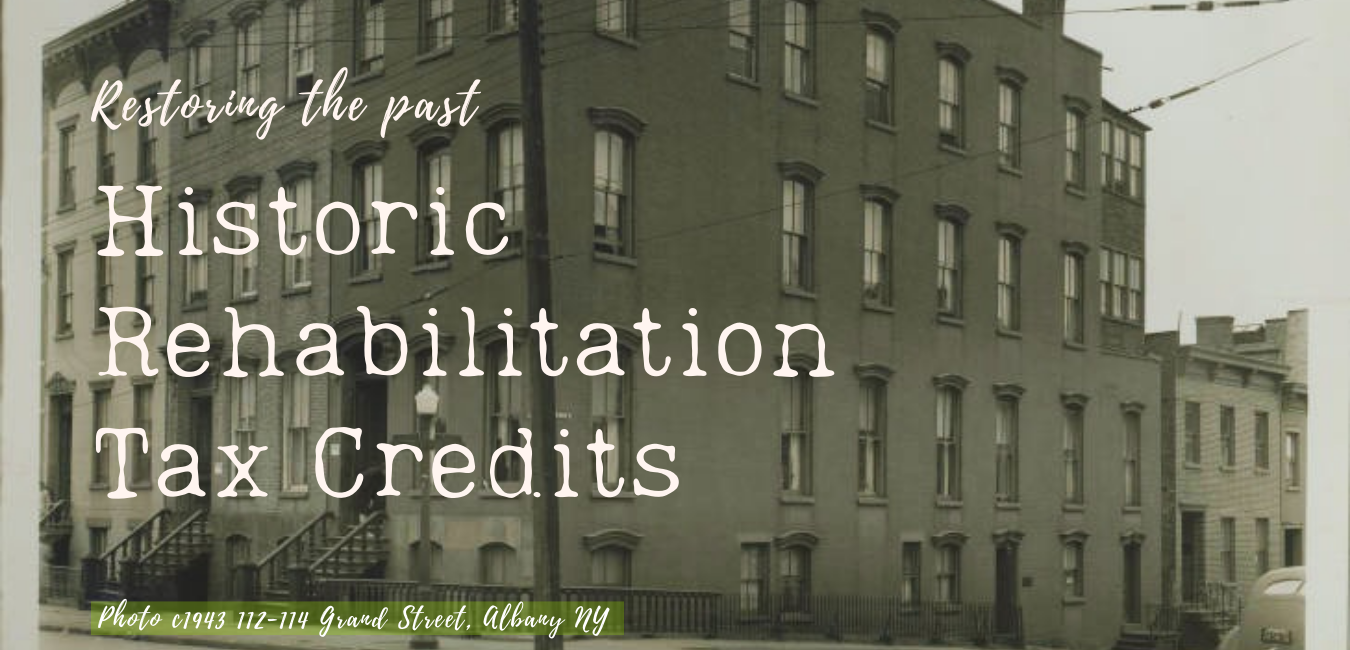
Through the use of tax incentives, the National Park Service (NPS) is encouraging private sector property owners to invest in the preservation of our country’s architectural heritage. Known as historic rehabilitation tax credits (HRTCs), the program provides a 20% reduction of federal income tax liability for qualified rehabilitation expenditures (QREs)supporting the re-use of income-producing historic buildings. Additionally, The New York State Historic Preservation Office (NY SHPO) offers a matching 20% credit and recently has increased it to 30% for smaller projects under 2.5 million in QREs!
Guiding clients through the Federal and State historic rehabilitation tax credit process is one way the EDR team supports ongoing historic preservation initiatives. The program has several advantages not only for the property owner but the community at large. Neighborhoods retain their unique character, property values increase, underused buildings are brought back into service, generate jobs, and create additional housing or commercial space.
71, 78, 100, and 112 Grand Street in Albany is a recent example of how the EDR Historic Preservation team worked with a client on the rehabilitation of four residential brick rowhouses in the Mansion Historic District in the heart of downtown Albany. Working with Spring Line Design, EDR prepared Part Two HRTC applications for all four buildings, approved by the NY SHPO and the NPS. The proposed rehabilitation work will result in 13 affordable residential units and a police sub-station as part of The Community Builders’ Mansion Initiative.
The neighborhood was formerly the site of wealthy families’ sprawling estates during the eighteenth and early-nineteenth centuries. Starting around 1830, these estates were purchased and redeveloped by local contractors and tradespeople to accommodate Albany’s growing population. Rowhouses, which provided an efficient architectural form to allow large numbers of workers to live close to the downtown business district, emerged as the dominant building type within the neighborhood. The rowhouses at 71, 78, 100, and 112 Grand Street were constructed as boarding houses circa 1840.
According to early city directories, during the remainder of the nineteenth century, the residences were occupied by numerous working- and middle-class residences, representing trades including laborers, masons, bricklayers, tailors, bakers, and merchants. Throughout the early twentieth century, the rowhouses were home to teachers, salespeople, business owners, bookkeepers, clerks, stenographers, laborers, and students. In the 1960s and 1970s, Grand Street and the immediate vicinity faced population shifts and some modern intrusions because of nearby urban development projects.
During the construction of Empire State Plaza (completed in 1978), residences were demolished, resulting in the displacement of the predominantly Jewish, Irish, and Italian immigrants along the perimeter of the Mansion District; however, the district’s core retained its distinct architectural character that lives on today.
EDR Historic Preservation Project Manager Susan Lawson noted, “We are so fortunate to be living and working in a state that values its older neighborhoods! Through the HRTC program, the NY SHPO and the NPS have put countless historic structures back into use. EDR takes pride in guiding owners, architects, and developers through the HRTC process, revitalizing buildings and their communities for a better environment.”
Founded in 1979, EDR is a certified Woman-Owned Business (WBE) dedicated to creating and sustaining a better environment for our clients, employees, and communities and doing so with integrity, a collaborative approach, and genuine passion for our craft. EDR a diverse group of professionals, including ecologists, botanists, wildlife biologists, GIS specialists, archaeologists, historians, visualization specialists, planners, landscape architects, and engineers.
For More Information
Susan Lawson | Project Manager, Historic Preservation[email protected]